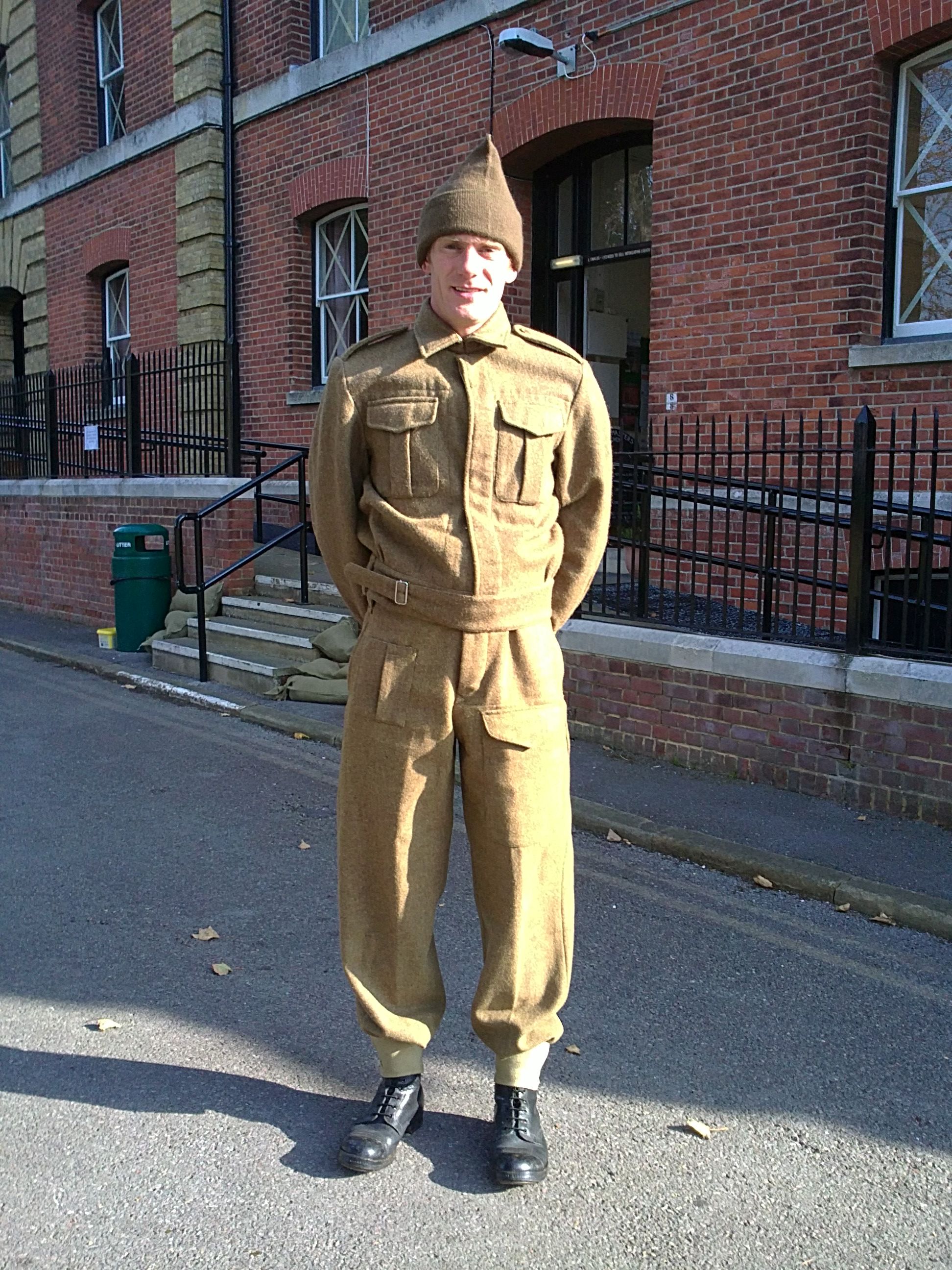I never used to get tired of this spiel when working at the museum.
Day in, day out I’d tell children how amazing serge cloth is. It’s all coming back to haunt me now as I sit here typing wearing a uniform made of serge cloth.
To begin at the beginning, serge is a kind of woollen twill cloth commonly used in military uniforms until cotton took over in the latter part of the 20th century. In particular British uniforms of the two world wars were made of serge, but you don’t see it much any more. Which is why I talk about it a lot in classes: it’s a real tactile representation of how different things are now. I believe it’s also a really great way to engage with the difficulties of life as a soldier.
I say serge is amazing with more than a hint of sarcasm but there is a lot to recommend it. It’s hard-wearing and robust: the uniform I use for myself in D Day school sessions is over seventy years old and going strong. It’s remarkably insulating being made of wool. It also looks the business. In fact, it’s the perfect natural material for making military uniforms out of.
It is, however, not without its drawbacks.
Anecdotally, it will absorb several times its own weight in water. So I’m not keen to be standing in the rain for too long wearing it as I know how long it’ll take to dry out. I have absolutely no desire to be taking part in an amphibious landing wearing it. Oh, and it gets really cold when it’s wet too. Double the fun.
The real clincher is that it’s itchy. It’s off the scale tickly next to the skin. Imagine the most tickly of woollen jumpers and you’re in the right ballpark. That’s annoying when you have to put it on in a classroom for five minutes or so, but imagine what it’s like at the end of a long day.
One thing I learned very quickly about living in serge is that your choice of base layer is crucial. Get it right and all the positives of serge come to the fore. Get it wrong and you’re heading for a world of misery. Just look at my face in the main picture: how convinced do I look?

The old days, with a cotton t shirt underneath. The fireman look?
Which is why, right now, I am putting careful thought into sourcing exactly the right new woollen undershirts for my uniforms. It’s vital for my future comfort that I get this right.
In the Great War that undershirt would be blue/grey flannel, which can be quite nice. In the Second World War it’s a woollen undershirt, so under my D Day woollen uniform I’ll have a woollen shirt. There’s no wonder Tommies looked at the American T shirt with envy. I know I would. It also explains why I used to wear a cotton T shirt under my uniform.
So, when you see me in my uniform in school, spare a thought for how amazing serge cloth is and remember why we don’t use it in the field any more.

